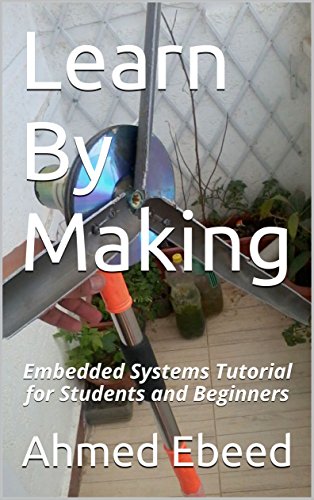Aircraft Gyro Horizon - DIY
by ahmedebeed555 in Circuits > Microcontrollers
18928 Views, 18 Favorites, 0 Comments
Aircraft Gyro Horizon - DIY




.jpg)

Do you want to make your own Gyro Horizon ? Have you seen this instrument on an aircraft before or in the Flight Simulator ?
This project is based on Renesas RX62N Demonstrating Kit YRDKRX62N as part of Renesas DevContest Competition 2010
Artificial Horizon or Gyro Horizon is a very important instrument for any flying aircraft. Have you ever thought of making your own?
The device is used on all flying aircrafts to indicate its attitude ( Roll & Pitch ) to the pilot.
This meter was a mechanical meter on old aircrafts that used a device called Gyroscope.
Modern aircrafts use an electronic device called ADIRU made by companies like Honeywell and Thales. The new device does the same function of attitude sensing with grater accuracy.
Here is the guide of making one. I put this step by step DIY instructable so you can try to do it some day. If you like it , you may want to vote for me in instructables contest. Thank you.
I received an evaluation kit from Renesas ( A Famous MCU manufacturer ) and decided to enter Renesas design contest.
The challenge was to use the evaluation kit with all its sensors and interface in a working useful application. I decided to use the kit to simulate the Gyro Horizon Flying instrument.
I got the project inspiration from Embraer 170 ADI ( Attitude Directional Indicator )
Here is my Channel on Youtube:
AeroArduino
Hardware Setup

The Renesas kit was ready to be used for the project . Actually , I designed my application to use the available components of the board .
The components I used in my project are :
3D accelerometer from Aliexpress or Banggood , eBay
Graphic LCD from Aliexpress or Banggood
Downloads
Software Concept


The concept is simple. Just as your iPhone uses its sensors to feel gravity using the 3D accelerometer, I used the kit's accelerometer to sense the gravity in magnitude and direction. The sensor senses gravity in 3 dimensions.
So it can feel not only gravity magnitude, but it can also sense gravity vector. Using the powerful Renesas RX62N Microcontroller , I knew how to analyze gravity vector to get tilt angel in tow dimensions ( Pitch and Roll ).
This part was the easiest part ( Belive me !!! )
The next part was how to demonstrate these values and readings visually.
The kit had a graphical wide LCD that inspired my ( and the 3D accelerometer ) to make this project . But the problem was that the LCD hasn't been shipped with a drawing driver software.
I had to make the driver for graphics by my own. I started from drawing a single dot on the LCD. Then connecting some dots to draw a straight line.
Then I could draw the entire static display. Then I wanted to draw the updating moving display that represents motion.
That is made by making the line coordinates updated with gravity values.
I also made my Gyro Horizon looks like the real Gyro Horizon in the aircraft in that the lower part ( that represents ground ) looks darker than the upper part ( that represents sky ).
I also made those two parts move and update their position with gravity so it gives the Gyro Horizon looks.
Here is part of the code that reads accelerometer output and responds to board motion:
x = accel_x_axis;
y = accel_y_axis;
z = accel_z_axis;
x -= BSP_Accel_X_Zero; /* Normalize */
y -= BSP_Accel_Y_Zero;
z -= BSP_Accel_Z_Zero;
x2 = x * x;
y2 = y * y;
sum_x2_y2 = x2 + y2;
AppMagnitude = sqrt(sum_x2_y2 / 2.0f);
Realizing the Concept




At this step I went to finalizing the project and transform the concept idea into reality.
Here is the link for Renesas contest entry.
http://renesasrulz.com/design_contest_archives/the_rx_mcu_design_contest/contest_entries/m/mediagallery/260.aspx
Here is the link for the project on my Blog MicroMonitor Embedded Egypt
http://embedded-egypt.blogspot.com/2011/05/gyro-horizon-renesas-rx62n.html
Here is the link for the project on my Blog in Arabic:
المقال باللغة العربية
http://arabic-embedded-egypt.blogspot.com/2011/05/gyro-horizon-renesas-rx62n-kit.html
https://www.youtube.com/watch?feature=player_embedded&v=3xw9ZHeqJ5Y
Here is the link to my Blog : Embedded Egypt
http://embedded-egypt.blogspot.com/
============================================================
Thank you for reading my instructable.
You can also find my book Learn By Making on Amazon website.
If you like this instructable you can support us by many ways:
--------------------------------------------------------------------
1. Leave comments stating your point of view about this article.
2. Buy our book on Amazon Learn By Making.
Thank you for visiting our instructable.
Here are some of my latest books on Amazon.